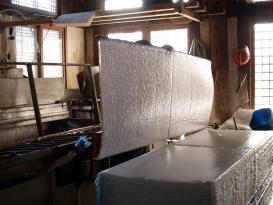Paper in pre-modern Korea was known for its unique qualities: a white glossy surface and cloth-like strength. It was very much desired by Korea’s threatening neighbour, China, which demanded large quantities as tributary gifts. China reaped millions of large paper sheets a year at its height, conferring on it names like “Mirror Bright Paper” and “Silk Cocoon Paper.” Beating the fibrous pulp, instead of macerating it, as was custom, followed by another round of beating, to full the just produced paper sheet, were the keys to this "innovation." Through this primitive-seeming innovation in Korean papermaking, this project seeks to join many works that have defamiliarized the dominant idea of technological innovation. Changes in nineteenth-century Korea with its material and social turmoil will be focused.
This discussion of innovation in nineteenth-century papermaking in Korea also provides a chance to contextualize the understanding of “practicality,” a concept that has not received much historical attention in spite of its importance in defining modern technoscientific practice. This project will attempt a systematic analysis of this concept by using the prominent thrust among the nineteenth-century Korean scholars and bureaucrats for “Practical studies (sirhak, shixue in Chinese),” and their specific engagement with the practical endeavour of papermaking. This project hopes to sharpen our understanding of the less examined idea of practicality that shaped the modern society of mass production and mass consumption through this investigation of various kinds of innovations and associated ideas of practicalities embedded in class-based but knowledge-centered nineteenth-century Korea.

A traditional Korean papermaking in a paper workshop in Chŏnju, South Korea (Photo Copyright: Kim Taeyong)
Project
(2016-2017)
